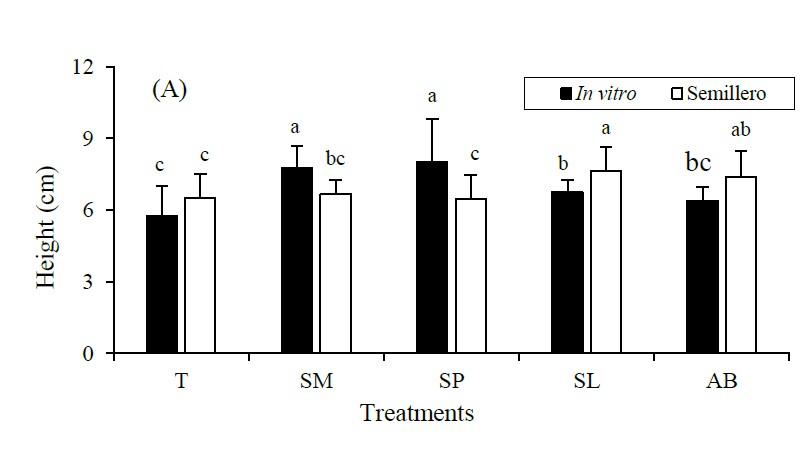Effect of plant growth-promoting rhizobacteria on the growth and yield of jalapeño pepper
DOI:
https://doi.org/10.29312/remexca.v13i28.3273Keywords:
Arthrobacter sp., Capsicum annuum L., Serratia liquefaciens, Serratia marcescens, Serratia plymuthicaAbstract
Jalapeño pepper is one of the most cultivated plants, its production has decreased due to the low fertility of the soil and the presence of diseases. Plant growth-promoting rhizobacteria are alternatives to improve the growth and yield of this crop. The objective was to evaluate the effect of rhizobacteria (Serratia marcescens, S. plymuthica, S. liquefaciens and Arthrobacter sp.) on the growth of jalapeño pepper. The experiment was established in 2020, in Gómez Palacio, Durango, Mexico. The effect of rhizobacteria was tested at the in vitro, seedbed and pot level, completely randomly designed with 15 and 8 repetitions. The variables evaluated were height, number of leaves, leaf area, chlorophyll content index, dry biomass in root, leaves and stems, number and size of fruits. The treatments evaluated were absolute control, fertilized control and the four rhizobacteria. The substrate used was a mixture prepared based on peat moss (Premier®), perlite (Agrolita®) and vermiculite (Agrolita®) with a ratio of 1:1:1 (w/w/w), the soil had a pH of 8.3, 2.2% of organic matter, 61.5 mg kg-1 of nitrogen (NO3) and 20.2 mg kg-1 of phosphorus. The rhizobacterium S. plymuthica allowed greater height and leaves in seedlings (in vitro and seedbed), but under pot conditions, S. marcescens showed better height, number of leaves, leaf area and plant biomass, S. plymuthica increased the amount of chlorophyll, and finally S. liquefaciens increased the number and size of fruits. Rhizobacteria can improve the growth and yield of jalapeño pepper.
Downloads

Published
How to Cite
Issue
Section
License
Copyright (c) 2022 Revista Mexicana de Ciencias Agrícolas

This work is licensed under a Creative Commons Attribution-NonCommercial 4.0 International License.
The authors who publish in Revista Mexicana de Ciencias Agrícolas accept the following conditions:
In accordance with copyright laws, Revista Mexicana de Ciencias Agrícolas recognizes and respects the authors’ moral right and ownership of property rights which will be transferred to the journal for dissemination in open access. Invariably, all the authors have to sign a letter of transfer of property rights and of originality of the article to Instituto Nacional de Investigaciones Forestales, Agrícolas y Pecuarias (INIFAP) [National Institute of Forestry, Agricultural and Livestock Research]. The author(s) must pay a fee for the reception of articles before proceeding to editorial review.
All the texts published by Revista Mexicana de Ciencias Agrícolas —with no exception— are distributed under a Creative Commons License Attribution-NonCommercial 4.0 International (CC BY-NC 4.0), which allows third parties to use the publication as long as the work’s authorship and its first publication in this journal are mentioned.
The author(s) can enter into independent and additional contractual agreements for the nonexclusive distribution of the version of the article published in Revista Mexicana de Ciencias Agrícolas (for example include it into an institutional repository or publish it in a book) as long as it is clearly and explicitly indicated that the work was published for the first time in Revista Mexicana de Ciencias Agrícolas.
For all the above, the authors shall send the Letter-transfer of Property Rights for the first publication duly filled in and signed by the author(s). This form must be sent as a PDF file to: revista_atm@yahoo.com.mx; cienciasagricola@inifap.gob.mx; remexca2017@gmail.
This work is licensed under a Creative Commons Attribution-Noncommercial 4.0 International license.


